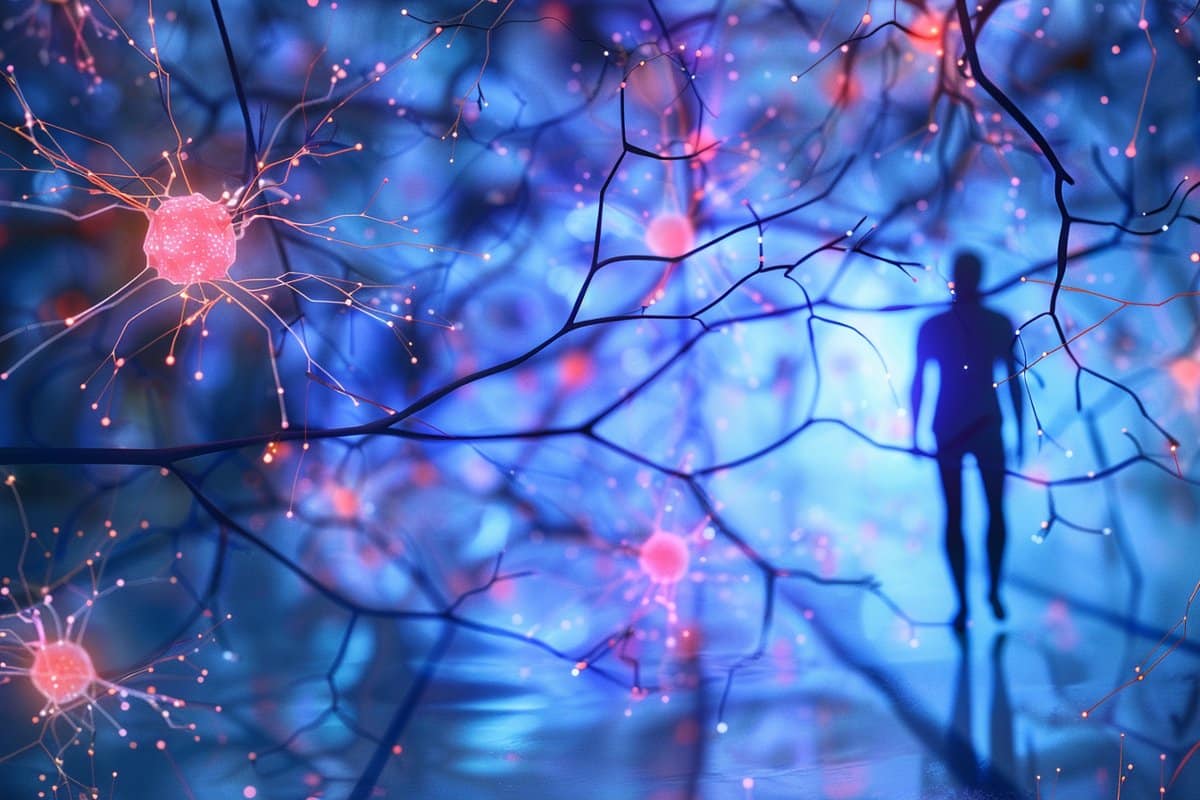Summary: Researchers developed a theoretical model illuminating the intricate mechanisms of synaptic plasticity, which underlies the brain’s ability to learn and form enduring memories. This model highlights the pivotal role of interactions among adjacent synaptic connections in facilitating rapid learning and the consolidation of long-term memories.
By focusing on the cooperative dynamics between excitatory and inhibitory synapses, the model reveals how these interactions contribute to the strength and stability of neural connections, essential for memory encoding and retention. This breakthrough offers a comprehensive understanding of synaptic co-dependency, presenting a novel perspective on the neuronal network dynamics that enable learning and memory formation.
Key Facts:
- Synaptic Plasticity as the Foundation of Learning: The model builds on the principle that the brain’s learning and memory capabilities hinge on its ability to strengthen or weaken synaptic connections based on neuronal activity.
- Importance of Synaptic Interactions: The study underscores the significant impact of adjacent synaptic interactions on determining connection strength and memory encoding, challenging the traditional view of isolated synaptic changes.
- Holistic View of Neuronal Networks: Integrating various rules concerning synaptic co-dependency into a network model, the research provides a nuanced understanding of how the brain’s plasticity mechanisms operate at a microscale, optimizing learning and memory processes.
Source: University of Basel
A researcher at the University of Basel, in collaboration with a colleague in Austria, has developed a new model that provides a holistic view on how our brain manages to learn quickly and forms stable, long-lasting memories.
Their study sheds light on the crucial role of interactions among neighboring contact sites of nerve cells for brain plasticity – the brain’s ability to adapt to new experiences.
In 1949, the Canadian psychologist Donald O. Hebb described that connections between neurons become stronger when the neurons are active at the same time and that strengthened connections facilitate signal transmission. The ability of our brain to modify the connections between neurons is fundamental for learning and memory.
“It has long been assumed that these adaptations occur mostly on a one-on-one basis at specific synapses, the contact sites between two neurons”, explains Dr. Everton Agnes from the Biozentrum, University of Basel.
“Interestingly, synapses that undergo changes also affect multiple neighboring synapses.” As these complex synaptic interactions are difficult to investigate experimentally, Agnes and his colleague Prof. Tim Vogels from the Institute of Science and Technology Austria have built a theoretical model to disentangle this phenomenon, also known as co-dependency.
Their work has recently been published in “Nature Neuroscience”.
Synaptic plasticity: The brain’s method for learning
We all know it from our school time: When repeatedly learning new vocabulary, you can recall them better. This is because the neurons involved in processing this information form stronger connections with each other over time.
These changes of synaptic connections – either strengthening or weakening – is known as synaptic plasticity. In this way, the brain continually updates its neuronal network to store new or remove irrelevant information – the basis for learning and memory.
The neurons are mostly connected by excitatory and inhibitory synapses. Whereas the excitatory synapses transmit a signal, the inhibitory reduce signal transmission.
“The different types of synapses don’t just work independently, instead neighboring synapses affect each other, thus shaping the strength and stability of neuronal connections”, says Agnes.
“With our model, we could reveal for example that interactions between neighboring excitatory synapses determine the strength of the connections, linked to how memories are encoded.”
Complementary, inhibitory synapses account for the long-lasting stability of excitatory synaptic modifications, providing the necessary mechanism for one-shot learning, when memories are learned after a single exposure.
Holistic view on neuronal network dynamics
The fine-tuned interplay between neighboring synapses is crucial for rapid learning as well as the formation of long-lasting memories.
“By integrating a large set of rules concerning synaptic co-dependency into our network model, we provide a more holistic view on the mechanisms underlying brain plasticity”, emphasizes Agnes.
The study highlights the importance of neighborly interactions and provides novel insights into the dynamics and optimization of neural networks in the brain at the microscale.
About this memory, learning, and synaptic plasticity research news
Author: Angelika Jacobs
Source: University of Basel
Contact: Angelika Jacobs – University of Basel
Image: The image is credited to Neuroscience News
Original Research: Open access.
“Co-dependent excitatory and inhibitory plasticity accounts for quick, stable and long-lasting memories in biological networks” by Everton Agnes et al. Nature Neuroscience
Abstract
Co-dependent excitatory and inhibitory plasticity accounts for quick, stable and long-lasting memories in biological networks
The brain’s functionality is developed and maintained through synaptic plasticity. As synapses undergo plasticity, they also affect each other. The nature of such ‘co-dependency’ is difficult to disentangle experimentally, because multiple synapses must be monitored simultaneously.
To help understand the experimentally observed phenomena, we introduce a framework that formalizes synaptic co-dependency between different connection types. The resulting model explains how inhibition can gate excitatory plasticity while neighboring excitatory–excitatory interactions determine the strength of long-term potentiation.
Furthermore, we show how the interplay between excitatory and inhibitory synapses can account for the quick rise and long-term stability of a variety of synaptic weight profiles, such as orientation tuning and dendritic clustering of co-active synapses. In recurrent neuronal networks, co-dependent plasticity produces rich and stable motor cortex-like dynamics with high input sensitivity.
Our results suggest an essential role for the neighborly synaptic interaction during learning, connecting micro-level physiology with network-wide phenomena.








